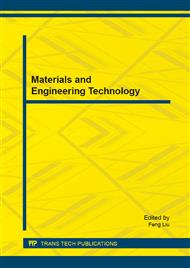p.141
p.145
p.157
p.171
p.177
p.181
p.187
p.193
p.197
Passive House and Construction Standard: Example Design and Multi-Objective Optimization
Abstract:
Due to environmental and energy matters, importance of future construction trend-Passive House Design is increasing all over the world. In Europe, already recommended values for passive buildings are included in thermal insulation standards and energy regulation directives. There is a wide range of construction materials nowadays. The key point is using proper techniques by harmonizing correct practice and materials. In this regard, smart optimization set-up approach is necessary in order to achieve the most suitable design which has the lowest CO2 and SO2 values and appears as the cheapest option. The sample given in this paper is an example of an exterior wall design for residential passive houses (heat transfer coefficient (U) value through the cross section is 0,108 W/m²K). Connected with the aim of the paper, which is showing an multi-objective optimization method for choosing the best thermal insulation design in the case of that more than one projection, results of given example design in the paper is used. Simultaneously, criteria of total thickness, heat transfer coefficient (U) through the cross section, global warming potential (GWP), acid produce (AP), primary energy content (PEI) non renewable and cost in 2013 per m2 are included in “Smart optimization set-up approach diagram”.
Info:
Periodical:
Pages:
177-180
Citation:
Online since:
January 2015
Authors:
Price:
Сopyright:
© 2015 Trans Tech Publications Ltd. All Rights Reserved
Share:
Citation:


